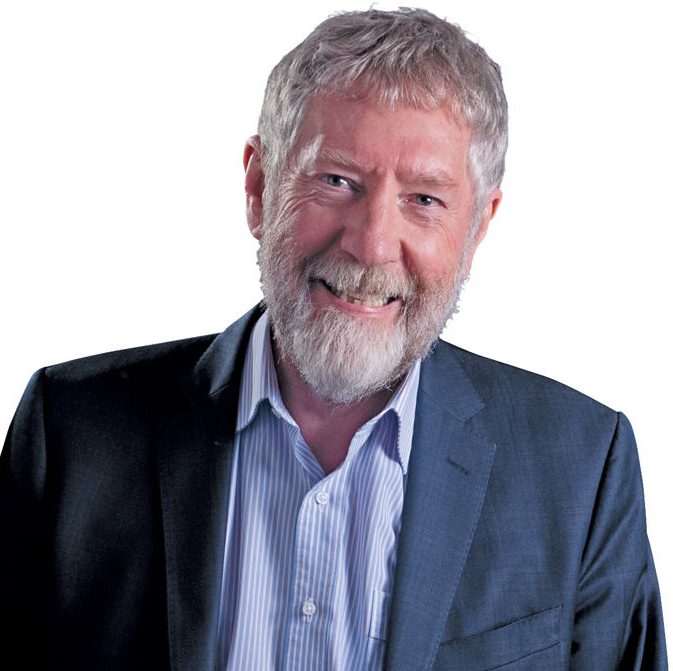
“There’s real potential in Molonglo for the same planning mistakes as Gungahlin. The current planners have ignored a key element of the Y-Plan – the plan that underpinned Woden, Tuggeranong and Belconnen town centres,” writes MICHAEL MOORE.
The expansion of the Molonglo Valley has the three political parties in the Assembly at each other’s throats. But they have all missed the most significant issue of all.

Planning Minister Chris Steel has used his (soon to be redundant) call-in powers to expedite development in the Molonglo Valley. At the same time, he has announced the intention of expanding housing targets in the area from around 55,000 dwellings to more than 70,000 by the year 2050.
The Greens attacked him for not being environmentally friendly enough. The use of call-in powers, according to Jo Clay and Rebecca Vassarotti, “was a slap in the face for Canberrans concerned about environmental protection” and then the usual naïve mantra “build more homes within our current footprint”.
Ms Vassarotti, is the government’s environment minister. She slammed the decision blatantly stating that she was not consulted on the matter. For his part, Mr Steel argues: “Planning for the commercial centre already includes provision of key infrastructure expected in a town centre, such as a college, library, community centre, transport interchange, a town park, and other recreational facilities”.
Verifying the lack of consultation that enraged the environment minister, Mr Steel added “the ACT government will also soon progress consultation work on a community needs assessment for the whole Molonglo Valley district”.
The Molonglo Valley (although at the lower population projections) was part of the consultation on the recently released Territory Plan. However, failure to consult a fellow minister with such an important interest is certainly churlish.
While the parties in government are either ignoring or attacking each other, the Opposition’s Shadow Minister for Planning, Peter Cain, bought into the melee.
He called for more transparency on the use of the call-in powers and argued “this is a clear sign that the planning minister has no faith in the new planning system to properly assess and approve major developments such as Stromlo Reach”.
Presenting an opposing view from the Greens, Mr Cain aligned with the planning minister saying he was glad the “government finally recognised that Canberra desperately needs more housing”.
For Mr Steel, the increase in population projections provides an opportunity to approach the National Capital Planning Authority to re-designate the Molonglo Valley from “group centre” to Canberra’s sixth town.
He argues: “At current projections, the area could even surpass the population of the city centre and Woden Valley. That’s why it is time to reclassify the suburb of Molonglo to reflect the scale and status of this district”.
There is real potential for the same planning mistakes as Gungahlin. The current planners have ignored a key element of the Y-Plan – the plan that underpinned Woden, Tuggeranong and Belconnen town centres. It is the presence of Commonwealth and other offices.
Having workplaces close to where people live improves productivity. It reduces time to get to work, reduces traffic congestion, reduces use of our urban infrastructure. Many will still move between town centres and commute to the city centre in Civic – but not all. It is illustrative to observe the traffic flow impact of school holidays. Even reducing traffic by 10 per cent makes a huge difference to traffic flow.
Part of the pressure for light rail from Gungahlin to Civic was the failure to provide appropriate incentives to departments and large companies to move to new city centres.
Granted, a huge confounding factor in the case of Gungahlin was the sale and retaining planning controls of the airport by the federal government. The Pialligo office development ought to have taken place in Gungahlin.
The Greens’ policy of maintaining the current footprint will exacerbate inequity. Lack of land supply has already made it nigh on impossible for young families to purchase a home with a backyard. The current trajectory is that only the very wealthy, and those with a helping hand from their parents, will be able to afford a free-standing home.
Skyscraper apartment buildings remove more and more of the trees from our suburbs. They act as heat generators and wind tunnel facilitators. This hardly provides a healthier and more friendly environment than an appropriate mix of housing. A mix of dwellings provides a genuine choice for as many Canberrans as possible.
Planning issues have caused dissention from the very first days of self-government – and before that time. It ought not be surprising that the dissension is becoming feistier in an election year.
Michael Moore is a former member of the ACT Legislative Assembly and an independent minister for health. He has been a political columnist with “CityNews” since 2006.
Who can be trusted?
In a world of spin and confusion, there’s never been a more important time to support independent journalism in Canberra.
If you trust our work online and want to enforce the power of independent voices, I invite you to make a small contribution.
Every dollar of support is invested back into our journalism to help keep citynews.com.au strong and free.
Thank you,
Ian Meikle, editor





Leave a Reply